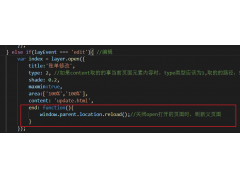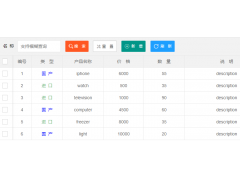How do the JavaScript relational comparison operators coerce types?(JavaScript 关系比较运算符如何强制类型?)
问题描述
当操作数属于不同类型时,JavaScript 关系比较运算符适用哪些规则?
What rules apply for the JavaScript relational comparison operators when the operands are of different types?
例如,是怎样的>空 评估?我可以在我的开发者控制台中输入它,它会给出结果 true,但为什么呢?
For example, how is true > null evaluated? I can type this into my developer console and it gives the result true, but why?
我搜索了一下,但没有找到任何解释这一点的博客文章,尽管有很多解释 == 和 === 比较运算符的类型强制.
I searched for a bit, but didn't find any blog posts explaining this, although there are plenty explaining type coercion for == and === comparison operators.
推荐答案
JavaScript 关系比较运算符类型强制定义在 JavaScript 规范, 特别是在描述操作符的部分 11.8 到 11.8.5 和部分 9.1 (ToPrimitive) 和 9.3 (ToNumber)它描述了强制操作数的过程.
JavaScript relational comparison operator type coercion is defined in the JavaScript specification, specifically in sections 11.8 to 11.8.5 which describe the operators, and sections 9.1 (ToPrimitive) and 9.3 (ToNumber) which describe the process of coercing the operands.
简而言之,4 个比较运算符(<、>、<= 和 >=) 尽力将每个操作数转换为数字,然后比较数字.两个操作数都是字符串时例外,在这种情况下,它们按字母顺序进行比较.
In short, the 4 comparison operators (<, >, <=, and >=) do their best to convert each operand to a number, then compare the numbers. The exception is when both operands are strings, in which case they are compared alphabetically.
具体来说,
如果参数
o是对象而不是原语,尝试转换它通过调用o.valueOf()或 - 如果o.valueOf未定义或调用时未返回原始类型 -通过调用o.toString()
If an argument
ois an object instead of a primitive, try to convert it to a primitive value by callingo.valueOf()or - ifo.valueOfwasn't defined or didn't return a primitive type when called - by callingo.toString()
如果两个参数都是字符串,请根据它们的字典顺序比较它们.例如,这意味着 "a" <"b" 和 "a" <"aa" 都返回 true.
If both arguments are Strings, compare them according to their lexicographical ordering. For example, this means "a" < "b" and "a" < "aa" both return true.
否则,将每个原语转换为数字,这意味着:
未定义->NaN空-> +0Boolean原始类型 ->1iftrue,+0iffalseString-> 尝试从字符串中解析一个数字
undefined->NaNNull-> +0Booleanprimitive type ->1iftrue,+0iffalseString-> try to parse a number from the string
然后按照您对运算符的期望比较每个项目,但需要注意的是,任何涉及 NaN 的比较都会评估为 false.
Then compare each item as you'd expect for the operator, with the caveat that any comparison involving NaN evaluates to false.
所以,这意味着以下内容:
So, this means the following:
console.log(true > null); //prints true
console.log(true > false); //prints true
console.log("1000.0" > 999); //prints true
console.log(" 1000
" < 1001); //prints true
var oVal1 = { valueOf: function() { return 1; } };
var oVal0 = { toString: function() { return "0"; } };
console.log(oVal1 > null); //prints true
console.log(oVal0 < true); //prints true
console.log(oVal0 < oVal1); //prints true
这篇关于JavaScript 关系比较运算符如何强制类型?的文章就介绍到这了,希望我们推荐的答案对大家有所帮助,也希望大家多多支持编程学习网!
本文标题为:JavaScript 关系比较运算符如何强制类型?


基础教程推荐
- 为什么我在 Vue.js 中得到 ERR_CONNECTION_TIMED_OUT? 2022-01-01
- jQuery File Upload - 如何识别所有文件何时上传 2022-01-01
- 如何使用 CSS 显示和隐藏 div? 2022-01-01
- Node.js 有没有好的索引/搜索引擎? 2022-01-01
- 如何使用sencha Touch2在单页中显示列表和其他标签 2022-01-01
- 如何在特定日期之前获取消息? 2022-01-01
- 什么是不使用 jQuery 的经验技术原因? 2022-01-01
- Javascript 在多个元素上单击事件侦听器并获取目标 2022-01-01
- WatchKit 支持 html 吗?有没有像 UIWebview 这样的控制器? 2022-01-01
- 每次设置弹出窗口的焦点 2022-01-01

















